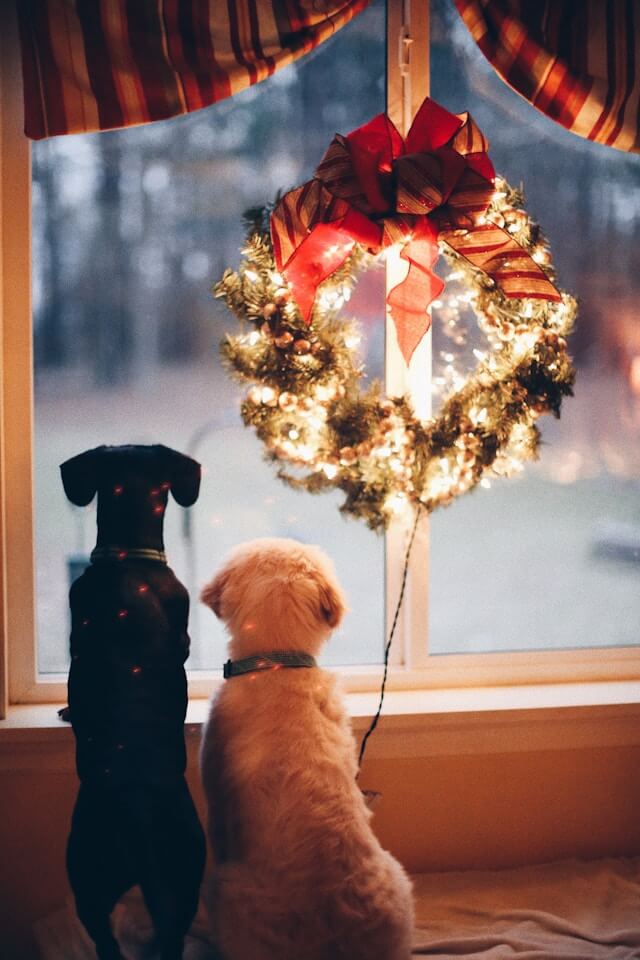Photo by Laura Beth Snipes on Unsplash
Origin and Meaning of Christmas
Christmas is celebrated on December 25th each year, mainly to commemorate the birth of Jesus Christ. This day is considered sacred, symbolizing God’s love and salvation for humanity.
According to Christian faith, the birth of Jesus represents the “incarnation of the Word”, meaning God came to earth in human form, bringing hope and peace, thus this day was established as a holiday for celebration.
What is the relationship between “Christmas” and “St. Nicholas”?
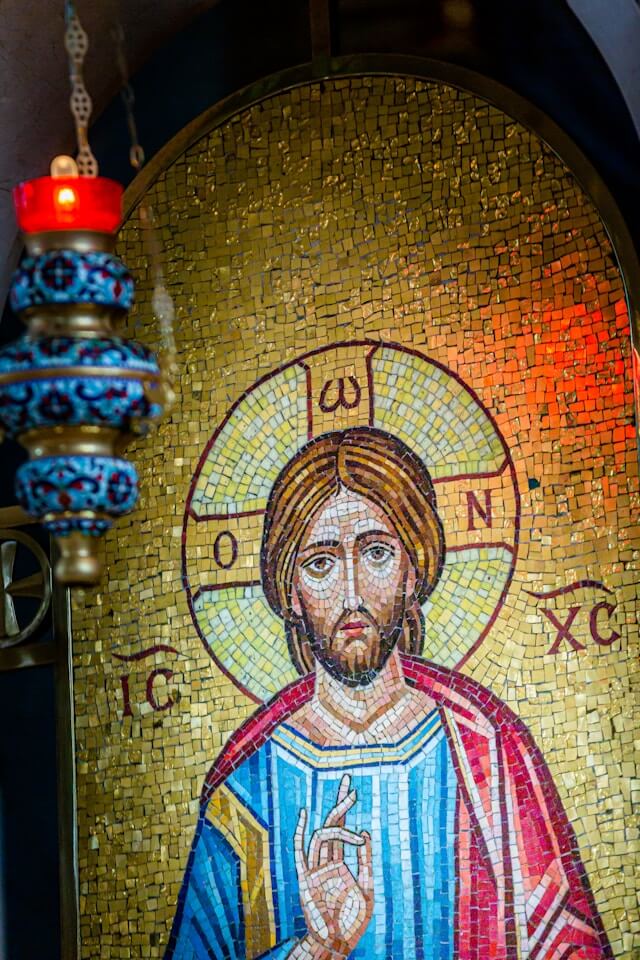
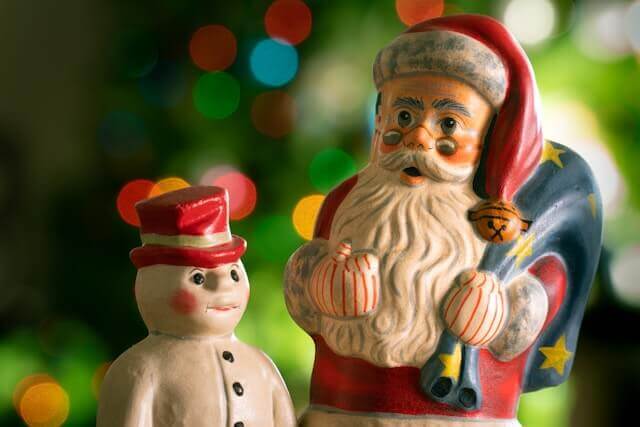
Photo by Rafik Wahba & Earl Wilcox on Unsplash
St. Nicholas is considered to be the prototype of modern Santa Claus, a Christian bishop who lived from around 270 to 343 AD, born in Patara in present-day Turkey.
He came from a wealthy Christian family and inherited a large fortune from his parents. He loved helping poor families throughout his life, and was known for his generosity and protection of the poor and children, which made him the patron saint of children and the poor.
At that time, there was a poor family with three daughters who had reached marriageable age, but they had no money for dowries. When St. Nicholas learned of this, he secretly climbed onto the roof of the poor family’s cottage on a cold night and dropped a bag of gold he had brought down the chimney into the house, where the gold coins happened to fall into stockings hanging by the fireplace to dry. This is the origin of our impression that Santa Claus drops gifts down the chimney for children.
Evolution of Santa Claus’s Image
The name Santa Claus comes from the Dutch "Sinterklaas", which is the name for St. Nicholas. As Dutch immigrants arrived in America in the early 17th century, this tradition gradually evolved into the Santa Claus image we know today.
In the 19th century, writers and illustrators began depicting St. Nicholas as a happy, fat man wearing red clothes, and this image ultimately reached its peak in Coca-Cola advertisements, becoming the globally recognized image of Santa Claus.
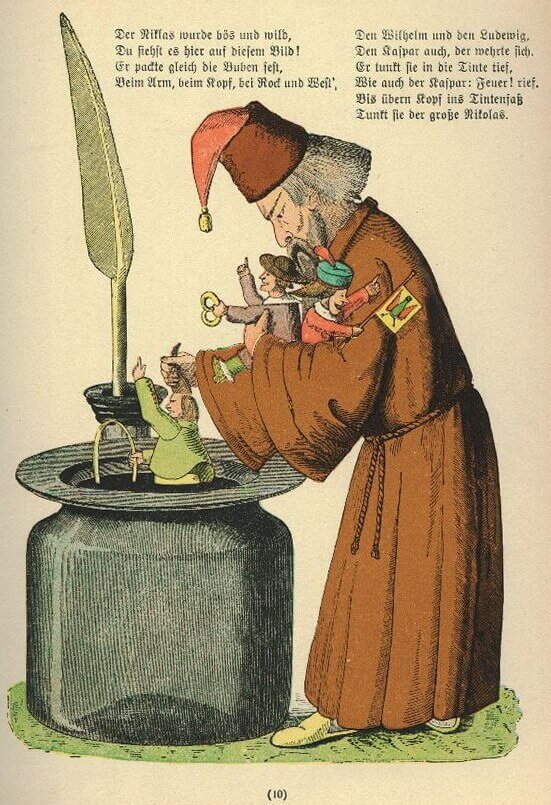
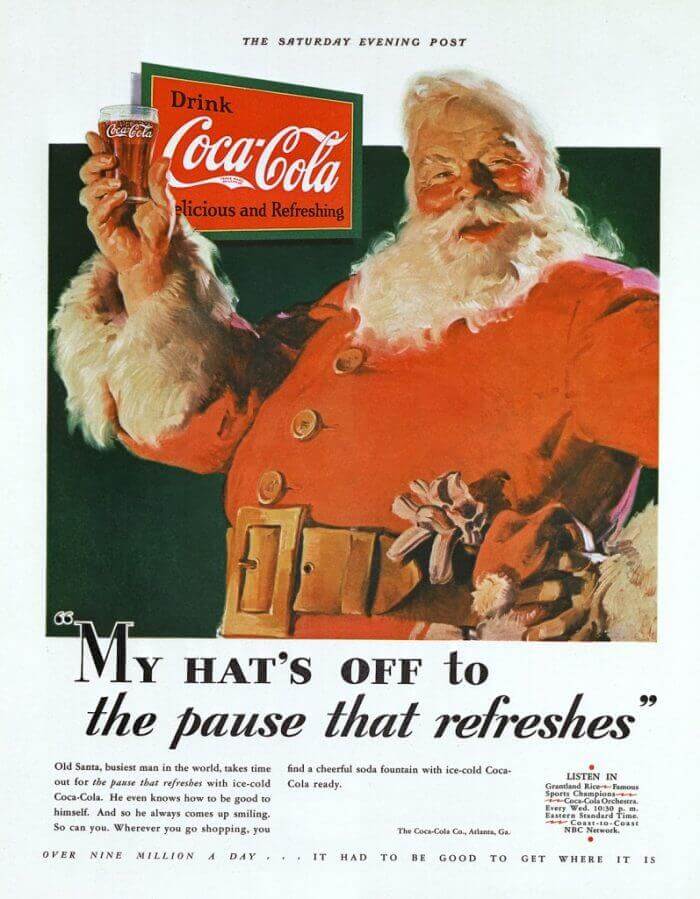
St. Nicholas Day
December 6th is designated as St. Nicholas Day, celebrated in many European countries, and people exchange gifts to commemorate his generous acts
Relationship between Christmas and St. Nicholas
Christmas celebrates the birth of Jesus Christ on December 25th. Over time, Christians began combining the generous spirit of St. Nicholas with the birth of Jesus, especially as some Christian denominations believed that the tradition of gift-giving should be celebrated on Jesus’s birth date, which led to the incorporation of St. Nicholas elements into Christmas celebrations
What’s the difference between Christmas Eve and Christmas Day?
| Christmas Eve | Christmas Day | |
|---|---|---|
| Date | December 24th | December 25th |
| Celebrations | Family gatherings, gift exchanges, decorating Christmas trees, attending church masses and other activities that often carry stronger family and religious significance | Many families enjoy a festive Christmas dinner and participate in other celebratory activities such as singing carols or joining community events, but the focus is usually on continuing the celebratory atmosphere from the previous day |
| Cultural Significance | Christmas Eve marks the beginning of Christmas celebrations, symbolizing hope and peace | Christmas Day is the climax of Christmas celebrations, symbolizing reunion and gratitude |
Why have Christmas Eve?
Although Christmas Day itself is also an important celebration, for historical and cultural reasons, many customs and activities are arranged on Christmas Eve. This arrangement allows families to focus on religious ceremonies and celebrations on Christmas Day, while leaving the eve for preparation and anticipation
| Reason | Explanation |
|---|---|
| Religious Tradition | Christmas Eve, as the eve of Jesus’s birth, is an important moment in Christian faith, symbolizing anticipation and hope. Many Christians attend vigils or masses on this evening to show respect for Jesus’s birth |
| Family Reunion | Christmas Eve is typically an important moment for family members to gather together. Families prepare dinner together, decorate Christmas trees, and exchange gifts, strengthening family bonds and emotions |
| Cultural Customs | In many countries, Christmas Eve is an important time for various traditional customs, such as singing carols and sharing stories, filling the day with festive atmosphere |
Christmas Customs
| Custom | Description |
|---|---|
| Love | One of Christmas’s traditions is the expression of love, where people give gifts to express their love and blessings for each other. This custom originates from St. Nicholas’s secret help to the poor, symbolizing sharing love and blessings. Christmas fills the world with laughter, the night with light, and winter with warmth. Whether it’s family love, friendship, or romantic love, the presence of love can be felt during the Christmas season |
| Decorating Christmas Tree | Families usually buy or set up a Christmas tree before Christmas and decorate it with lights, ornaments, and stars. Symbolizes the persistence and abundance of life |
| Gift Exchange | In many countries, especially on Christmas Eve (December 24th), family members and friends exchange gifts to express their love and blessings for each other. This custom originates from St. Nicholas’s secret help to the poor, symbolizing sharing love and blessings |
| Hanging Stockings | Originates from the legend of St. Nicholas dropping gold coins into drying stockings, symbolizing anticipation and surprise |
| Lighting Candles | Symbolizes Jesus as the light of the world, also represents hope and warmth |
| Christmas Feast | Christmas feasts vary by region but typically include traditional foods like roast turkey, Christmas pudding, and gingerbread. In Britain, turkey dinner has become an important part of Christmas, symbolizing reunion and gratitude |
| Sending Christmas Cards | People send handwritten Christmas cards to relatives and friends to express their thoughts and blessings |
| Listening to Christmas Music | Christmas songs like “Jingle Bells” and “White Christmas” are widely played during the holiday season, adding to the festive atmosphere |
| Carol Singing | Commemorating angels announcing Jesus’s birth to shepherds, traditionally children go door to door singing Christmas carols |
| Attending Religious Ceremonies | Many Christians attend church masses or thanksgiving services on Christmas Eve or Christmas Day to commemorate the birth of Jesus Christ. These ceremonies usually involve singing and prayer |
| Special Activities and Celebrations | In some countries, like Japan, people choose to celebrate Christmas by eating KFC, while in Britain there’s a tradition of kissing under mistletoe, symbolizing reconciliation and peace, believed to bring good luck and love. These unique celebration methods reflect local cultural characteristics |
| Making Gingerbread Houses | Originates from the German fairy tale “The Candy House”, symbolizing cozy family time |
Important Christmas Symbols
1. Santa Claus 🎅
- Originates from the legend of St. Nicholas
- Delivers gifts riding a reindeer sleigh
- Enters through chimneys
- Kind image with red coat and white beard
2. Christmas Tree 🎄
| Decoration | Symbolic Meaning |
|---|---|
| Colored Lights | Symbolizes the Star of Bethlehem that guided people to Jesus, also represents light and hope |
| Gold Balls | Originally derived from apple decorations, represents the forbidden fruit of Eden, reminding people to stay away from temptation |
| Star Topper | Symbolizes the Star of Bethlehem, which guided the Three Wise Men to Jesus’s birthplace |
| Gifts Under Tree | Commemorates St. Nicholas’s secret help to the poor, also symbolizes God’s most precious gift to humanity - Jesus |
| Bells | Symbolizes joy and blessings, legend says they can drive away evil spirits |
| Candy Canes | Represents shepherds' staffs, reminding people to be like good shepherds |
| Angel Decorations | Symbolizes the angels who brought good news, delivering messages of peace and joy |
| Snowflake Decorations | Represents winter’s purity and beauty |
| Pine Cones | Symbolizes vitality and eternity, also represents harvest and abundance |
What are the Christmas customs and practices in different regions?
| Region/Country | Custom | Custom Description |
|---|---|---|
| Japan | Couple Celebration | In Japan, Christmas is seen as a couples' holiday, and many couples choose to eat KFC fried chicken, which has become a local Christmas custom |
| Mexico | Radish Carving | On Christmas Eve, families gather to carve nativity scenes from radishes, with the best works displayed in the city |
| United Kingdom | Family Gathering | British people enjoy a festive roast turkey dinner on Christmas Day and have a tradition of kissing under mistletoe. Additionally, the day after Christmas is called Boxing Day, when stores have big sales |
| Portugal | Remembering Deceased Relatives | During Christmas breakfast, extra chairs are placed to remember deceased relatives, showing respect for the departed |
| Catalonia (Spain) | Caga Tio | Children give candy to a wooden toy called “Caga Tio” and beat it with sticks on Christmas Eve to get more candy |
| Poland | Straw Drawing | After Christmas dinner, straw is placed under the tablecloth, and guests take turns drawing straws, with the color symbolizing their fortune for the coming year |
| Czech Republic | Shoe Prediction | Single women throw a shoe over their shoulder; if the shoe points towards the door, it predicts marriage in the coming year |
| Ukraine | Spider Decoration | A spider decoration is placed on the Christmas tree, originating from a legend, symbolizing good luck and blessings |
| Venezuela | Roller Skating to Mass | In the week before Christmas, people roller skate to morning mass, and roads are closed to ensure safety |
| Philippines | Round Cheese | Families gather to eat round cheese (kesi de bola), which is a special Christmas food |
| United States | Pickle Decoration | Americans hang pickles on Christmas trees as decoration, a tradition originating from a Civil War story |
| Germany | Christmas Markets | Christmas markets are held throughout Germany, offering various foods and handicrafts, an important activity during Christmas |
| United Kingdom | Queen’s/King’s Christmas Speech | The British Queen or King delivers a Christmas speech on Christmas Day, a royal tradition |
| Australia | Beach Parties in the Sun | Australians hold beach parties during Christmas, enjoying sunshine and beaches |
Modern Meaning of Christmas
Modern Christmas has transcended religious holidays to become:
- A time for family reunion
- An opportunity to share love and care
- A day for reflection and gratitude
- A holiday for delivering blessings
Christmas Festival English Vocabulary
| English | Chinese |
|---|---|
| seafood soup | 海鮮湯 |
| shrimp | 蝦子 |
| crab | 螃蟹 |
| bar | 酒吧 |
| disco | 舞廳 |
| chocolate with churros | 吉拿棒 |
| parade | 遊行 |
| santa | 聖人 |
| Roast Dinner | 烤肉大餐 |
| roast | 烤 |
| Roast turkey | 烤火雞 |
| Brussel Sprout | 小洋白菜 |
| stuffing | 填料 |
| gravy | 肉汁醬 |
| pigs in blanket | 培根捲小肉腸 |
| Christmas Pudding | 聖誕布丁(水果蛋糕淋上白蘭地後用火槍烤過) |
| Christmas market | 聖誕市集 |
| glove | 手套 |
| scarf | 圍巾 |
| hat | 帽子 |
| handmade | 手工的 |
| Christmas decoration | 聖誕裝飾 |
| red wine | 紅酒 |
| clove | 丁香 |
| cinnamon | 肉桂 |
| potato pancake | 馬鈴薯薄餅 |
Common Questions
Why does Santa Claus deliver gifts riding a reindeer sleigh and enter through chimneys? 🎅
The legend of Santa Claus delivering gifts while riding a reindeer sleigh and entering through chimneys comes from a combination of various cultural and historical factors.
Origin of Riding Reindeer Sleigh 🦌
| Reason | Explanation |
|---|---|
| Flying Sleigh | This image first appeared in 19th-century literature, in Clement Clarke Moore’s 1823 poem “A Visit from St. Nicholas”. The poem describes how Santa Claus flies on Christmas Eve in a sleigh pulled by eight reindeer, adding mystery and magic to the concept |
| Symbolism of Reindeer | In Nordic and other cultures, reindeer are seen as symbols of winter and holidays. They can move quickly in snow, suitable for winter gift delivery. Rudolph, the legendary lead reindeer, became Santa’s iconic companion due to his glowing red nose |
Reasons for Entering Through Chimney
| Reason | Explanation |
|---|---|
| Legend Background | St. Nicholas was known for his generosity. He once provided gold coins for poor families, reportedly dropping them through the chimney, which became the origin of Santa Claus entering houses through chimneys |
| Practical Considerations | The setting of entering through chimneys also reflects the family structure and living environment of the time. Many families would place stockings or gifts by the fireplace in winter, making it convenient for Santa Claus to place gifts in these locations, adding fun and mystery to the holiday |
Why do Japanese people celebrate Christmas by eating KFC?
In Japan, the custom of eating KFC at Christmas originated from a marketing campaign in the 1970s, and this phenomenon has become a unique local tradition, similar to how Taiwanese people must barbecue during Mid-Autumn Festival.
| Reason | Explanation |
|---|---|
| Marketing Campaign | In 1974, Japanese KFC manager Takeshi Okawara launched the “Christmas Party Barrel” marketing campaign. At the time, Okawara heard some foreigners complaining about not being able to buy turkey in Japan, so he decided to use fried chicken as a substitute to celebrate Christmas |
| Impact of Fake News | Okawara even claimed in the media that “eating fried chicken is an American Christmas tradition”. Although this statement wasn’t true, it successfully attracted Japanese consumers' attention, closely linking KFC with Christmas from then on |
Christians make up less than 1% of Japan’s population, so Christmas doesn’t have strong religious significance but is seen as a moment for celebration and reunion. Against this background, KFC became a convenient and popular choice, especially for family gatherings.
Moreover, KFC’s party barrel aligns with Japanese people’s emphasis on “sharing food”, making this custom not just a food choice but also part of family reunion
Why do British people kiss under mistletoe?
Mistletoe is a parasitic plant belonging to the Santalaceae family, typically growing on tree trunks or branches. It survives by absorbing nutrients from its host tree and remains green in winter, making mistletoe particularly noticeable in cold seasons. Mistletoe berries are white and somewhat toxic
According to Nordic mythology, mistletoe is closely related to the story of the deity Baldur. Baldur’s mother Frigg, to protect him, made all plants swear not to harm him, but she forgot about mistletoe.
Eventually, Baldur was killed by his brother Höðr with an arrow made from mistletoe. Frigg was heartbroken, and her tears became the white berries on the mistletoe. The gods, moved by this, worked together to resurrect Baldur.
After Baldur’s resurrection, Frigg decided to kiss him whenever she passed under mistletoe, replacing mistletoe’s original symbol of death with “love and peace”, and hoping to spread warmth to more people, establishing the rule that “people passing under mistletoe should embrace each other”.
This gradually evolved into the later tradition of “people under mistletoe should kiss each other (kiss under the mistletoe)".
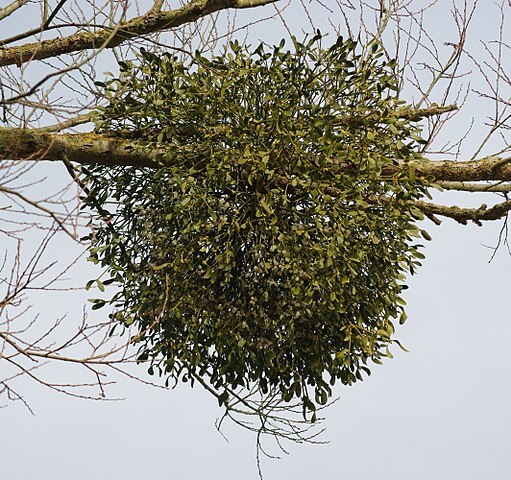
Is there a difference between Christmas and Christmas?
Christmas, also called Christmas, in Taiwan, the government in the 1980s believed that the character “聖” (holy) conflicted with the “聖” in Confucius’s title, so they replaced 聖誕節 with 耶誕節. Today, people generally use both terms interchangeably without distinction.
Reference
- 聖誕節 - 維基百科,自由的百科全書
- 平安夜 - 維基百科,自由的百科全書
- 聖尼古拉節 - 維基百科,自由的百科全書
- 槲寄生 - 維基百科,自由的百科全書
- 聖誕節的由來與意義知多少?聖誕習俗活動及代表物報你知! - 濃農本家
- 聖誕老人、聖尼古拉斯與他的快樂夥伴
- 【從主教聖人到全球偶像】聖誕老人的起源故事 | SBS Chinese
- 什麼?原來你不認識聖誕老公公嘛!他跟耶穌的關係其實已經…. (聖誕節系列01) – 🇮🇱以色列美角
- 聖誕節的由來是?帶你看聖誕節的故事、習俗與慶祝方式|親子天下
- 聖誕節由來和故事知多少?各國聖誕節慶祝習俗及意義一次看│TVBS新聞網
- 聖尼古拉節(Saint Nicholas' Day)來了!聊聊那些趣事和離奇事…… | 聖尼古拉節 | 聖誕老人 | 原型 | 傳統 | 12月6日 | 基督教 | 禮物 | 荷蘭 | 比利時 | 德國 | 瑞士 | 法國 | 希臘 | 俄羅斯 | 西班牙 | 希望之聲
- 各國聖誕節怎麼過?聖誕習俗大公開 |Hi家教線上外語專家 語言學習平台|線上英文課程推薦Hi家教
- 【節慶英文】聖誕節怎麼過?一秒吃一顆葡萄你行嗎?各國聖誕文化習俗比一比! | Engoo線上英文
- 【作客歐洲】德式聖誕節,不一樣的德國美食 - 異數風格旅行社
- 聖誕冷知識《各國聖誕節的習俗》真的是長知識了 | 宅宅新聞
- Why do we kiss under mistletoe? - Carlos Reif - YouTube
- 【影片】你所不知的耶誕傳統:在槲寄生花圈下邂逅,就能索取你的吻 - TNL The News Lens 關鍵評論網
- 槲寄生為什麼會變成大家最喜歡的寄生植物 - 國家地理雜誌官方網站|探索自然、科學與文化的最佳權
- 在槲寄生下吻我 北歐古老傳說卻成歐美浪漫傳統 – 上報 / 國際
- 日本過聖誕居然有這麼多奇葩習俗?
- 浪漫滿分的日本聖誕節!吃肯德基、草莓蛋糕、逛聖誕市集! - 日語教學 第一品牌|永漢日語
- 流傳50多年傳統!日本人聖誕節愛去1地方 網秒懂:和台灣人中秋要烤肉一樣 | 世界萬象 | 全球 | 聯合新聞網
- 日本聖誕節為何要吃肯德基? 原來當初竟是假新聞 | 國際 | Newtalk新聞
